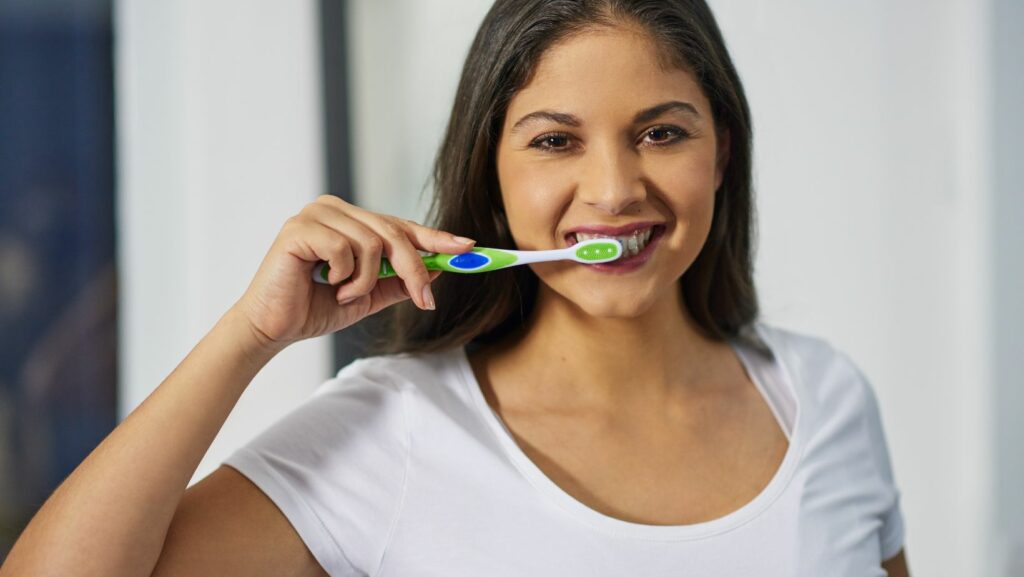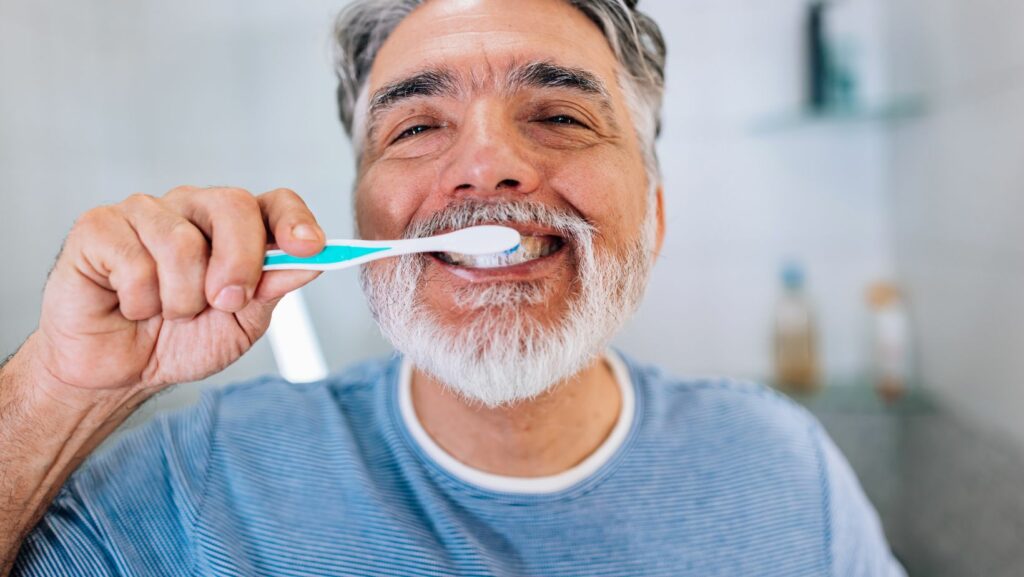You brush twice a day, use toothpaste that promises a “fresh, clean feeling”, and maybe even rinse with mouthwash for good measure — yet somehow, your teeth still don’t feel completely clean. That smooth, just-left-the-dentist sensation disappears within minutes, leaving behind a fuzzy film or lingering roughness. Sound familiar?
You’re not alone. Many people experience this, even when they’re diligent about brushing. The good news is, the solution usually doesn’t require fancy gadgets or complicated routines. A few simple tweaks — and a better understanding of what’s really happening in your mouth — can help you get that lasting clean you’re looking for.
The Hidden Culprit: Plaque and Biofilm
That fuzzy feeling on your teeth isn’t your imagination. It’s plaque — a thin, sticky film made up of bacteria, saliva, and food particles. Plaque forms constantly, even minutes after brushing, and it loves to cling to rough spots and tight spaces between teeth.
If it’s not removed effectively, plaque hardens into tartar (calculus), which can only be removed by a professional cleaning. Regular brushing keeps it under control, but technique matters more than time spent scrubbing. Even a thorough brusher can miss spots if they’re not using the right approach.
Professionals like your sydney park dentist can identify the areas you’re missing and show you how to adjust your brushing to clean them properly. A quick demonstration from a pro often reveals that it’s not what you’re doing, but how you’re doing it that makes the difference.
Brushing Technique: It’s All in the Angle
Most people move their toothbrush back and forth in a straight line across the teeth — but that’s not the most effective way to clean. The key is to angle your brush at about 45 degrees toward the gum line and use small, circular motions. This helps remove plaque that builds up where your teeth meet your gums — one of the most common places people miss.
Another common mistake is rushing. Two minutes might feel like an eternity when you’re half-asleep in the morning, but that’s the recommended amount of time needed to clean all tooth surfaces properly. Setting a timer or using an electric toothbrush with a built-in timer can help you stay consistent.
Try dividing your mouth into four sections — upper right, upper left, lower right, lower left — and spend 30 seconds on each. It’s simple but surprisingly effective.
Are You Using the Right Toothbrush?
Not all toothbrushes are created equal. If your brush has stiff bristles, it may actually do more harm than good, wearing down enamel and irritating gums. A soft-bristled brush is more effective for removing plaque without damaging your teeth or gums.

Electric toothbrushes can also make a big difference, especially for people who struggle with technique or tend to brush too hard. Their consistent movement ensures more even cleaning, and many have pressure sensors to prevent overbrushing.
Don’t forget to replace your toothbrush (or brush head) every three months — or sooner if the bristles look frayed. Worn-out bristles don’t clean efficiently and can push plaque around instead of removing it.
Toothpaste Matters More Than You Think
It’s easy to assume all toothpastes are the same, but the ingredients play a big role in how clean your teeth feel. Fluoride is essential for strengthening enamel and preventing decay, but some formulas also contain polishing agents that help remove surface stains and smooth the enamel, making your teeth feel cleaner for longer.
If you’re prone to plaque buildup, look for toothpaste with mild abrasives or plaque-fighting ingredients like zinc citrate or stannous fluoride. However, be cautious with whitening pastes — some contain harsh abrasives that can wear down enamel if overused.
If your teeth still feel unclean after brushing, it may also be due to taste fatigue — when your brain stops registering that “fresh” sensation from your toothpaste. Switching flavours or brands occasionally can help reset that feeling.
You Might Be Missing the Spaces Between
Even with perfect brushing, your toothbrush can only reach about 60% of your tooth surface. The rest — those tight spots between teeth — is where food particles and plaque love to hide. That’s why flossing (or using interdental brushes or water flossers) is so critical.
If you skip flossing, you’re leaving nearly half your mouth uncleaned. Over time, that trapped debris contributes to bad breath, plaque buildup, and gum irritation — all of which make your mouth feel less fresh, even right after brushing.
Start with once a day, ideally at night before bed. If traditional floss feels tricky, try floss picks or a water flosser. The goal is simply to disturb that hidden plaque so it can’t harden or create that “gritty” sensation between teeth.
The Role of Your Tongue and Gums
Your tongue is a magnet for bacteria. It has tiny grooves and crevices that trap food particles and bacteria, contributing to bad breath and a less-than-clean feeling. If you’re not cleaning your tongue regularly, that coating can spread bacteria back onto your teeth after brushing.
Use a tongue scraper or your toothbrush to gently clean your tongue from back to front each morning. It only takes a few seconds, but it dramatically improves freshness.
Your gums also play a role in that clean-mouth feeling. Inflamed or receding gums can trap debris and bacteria, even if your teeth themselves are spotless. Massaging your gums gently while brushing and using an alcohol-free mouthwash can help keep them healthy and free from buildup.
Hidden Diet Habits That Undo Your Efforts
Even if you’re brushing well, what you eat and drink throughout the day can quickly undo your hard work. Sticky, sugary foods (like dried fruit, caramel, or soft drinks) cling to enamel and feed bacteria, leaving that rough, fuzzy feeling behind.
Acidic drinks like sparkling water, wine, or fruit juice also soften enamel, making it easier for plaque to stick. If you constantly sip on these throughout the day, your mouth never gets a chance to neutralise its pH — meaning your teeth are under constant attack.
To counteract this, try drinking more plain water, especially after meals and snacks. It helps rinse away food particles and bacteria while keeping your mouth hydrated. Chewing sugar-free gum can also boost saliva flow, which is your body’s natural defence against acid and plaque.
Morning vs Night: Timing Matters
Your mouth’s natural defences change throughout the day. At night, your saliva production slows down, meaning bacteria can multiply more easily while you sleep. That’s why brushing before bed is non-negotiable — it clears away food particles and plaque that could harden overnight.
Brushing in the morning is just as important, but for different reasons. It removes the film of bacteria that’s built up overnight and helps restore freshness. If you’re brushing straight after breakfast, wait about 30 minutes, especially if you’ve had acidic foods like fruit or juice — brushing too soon can wear away softened enamel.
It Might Be Time for a Professional Clean
If you’re brushing, flossing, and rinsing properly but your teeth still don’t feel clean, there’s a good chance you’re dealing with hardened plaque (tartar) that can only be removed by a professional.
Over time, even the best brushing routine can’t reach every nook and cranny. Regular dental cleans remove built-up tartar, polish enamel, and leave that ultra-smooth finish you just can’t get at home. Most dentists recommend a professional clean every six months — more often if you’re prone to plaque buildup or drink a lot of coffee or wine.
Not only does it restore that “freshly polished” feeling, but it also keeps your gums healthy and prevents future issues before they start.
When Clean Feels Different
Sometimes, that “unclean” feeling isn’t about hygiene — it’s about texture. Certain medical conditions, medications, or changes in saliva composition can alter how your teeth feel. A dry mouth, for instance, can make your teeth feel coated or sticky, even when they’re perfectly clean.
If you’ve noticed a sudden change in how your teeth feel, talk to your dentist. They can rule out underlying issues and recommend products — like specialised toothpaste or hydrating mouth rinses — to restore balance.
Keeping That Clean Feeling
That post-brush smoothness isn’t just about minty freshness — it’s about creating an environment where bacteria have a hard time sticking around. By refining your brushing technique, cleaning between teeth, and being mindful of your diet, you can make that clean-mouth feeling last much longer.

And while no at-home routine can replace a professional clean, the combination of good daily habits and regular dental care ensures that your smile not only feels clean, but truly is — healthy, strong, and ready to last a lifetime.

